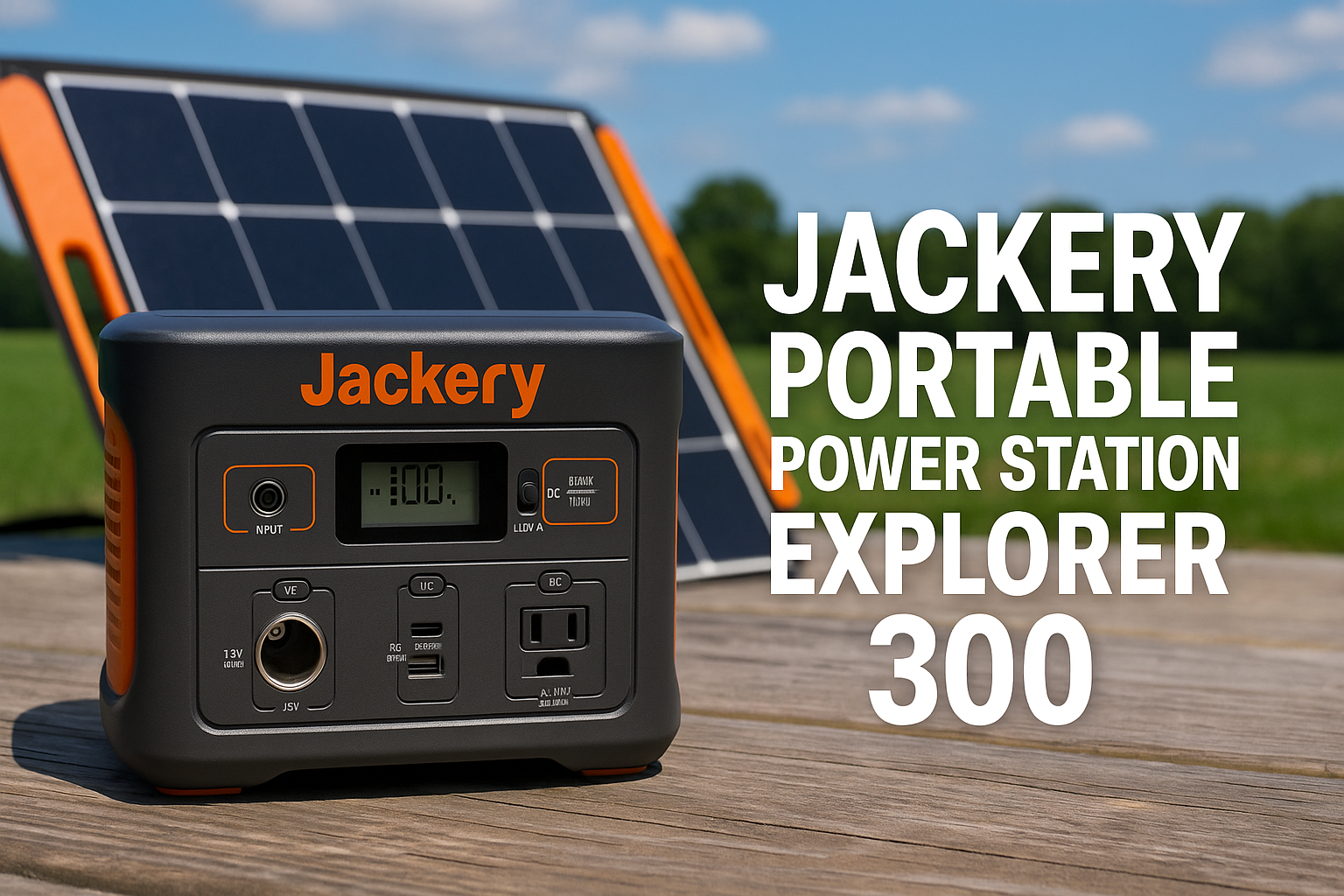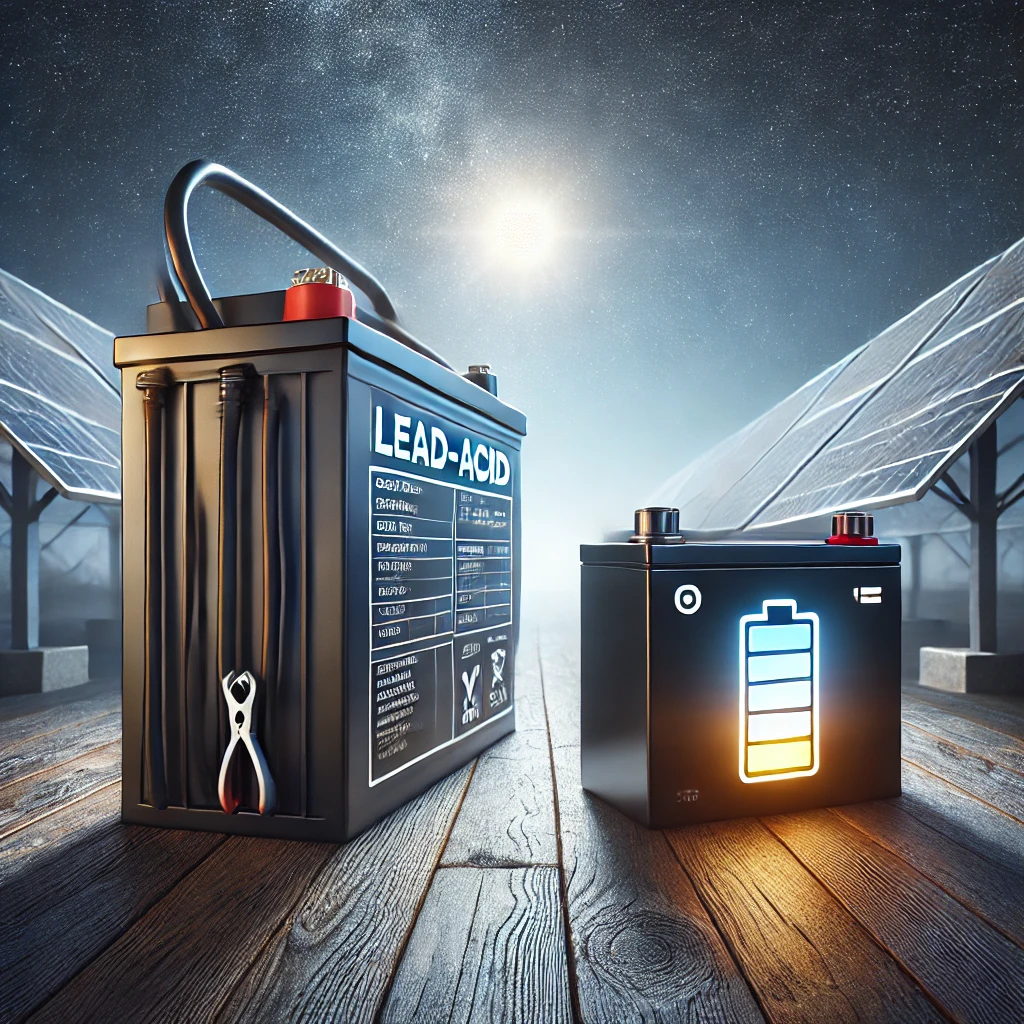Introduction
In recent years, portable power stations have become essential for anyone seeking reliable, eco-friendly backup power. From campers and outdoor enthusiasts to homeowners preparing for blackouts, the demand for compact yet powerful solar-compatible generators has skyrocketed.
Among the market leaders, Jackery has consistently stood out as a pioneer. Since launching their first lithium-based portable power station in 2015, Jackery has built a reputation for combining quality, simplicity, and performance. The Jackery Portable Power Station Explorer 300 is one of their most popular models, offering a balance between portability, efficiency, and functionality.
But is it worth the investment in 2025? This in-depth review will explore the Explorer 300’s design, performance, features, advantages, disadvantages, comparisons, and real-world applications to help you make an informed decision.
What Is the Jackery Portable Power Station Explorer 300?
The Jackery Explorer 300 is a compact, lightweight solar generator designed for powering small appliances and multiple devices. With a 293Wh lithium-ion battery pack and a 300W pure sine wave inverter, it’s built to handle everyday electronics like laptops, phones, drones, routers, and small fans.
While it won’t replace a large backup generator for whole-house use, its size, efficiency, and portability make it one of the best travel-friendly power solutions available today.
Technical Specifications
Here are the key specs of the Jackery Explorer 300:
- Battery Capacity: 293Wh lithium-ion NMC battery
- Inverter Power: 300W continuous, 500W surge
- Weight: 7.1 pounds (light enough to carry with one hand)
- Dimensions: 9.1 x 5.2 x 7.8 inches
- AC Outlets: 2 Pure Sine Wave (110V, 300W each)
- USB-C PD Port: 60W (input/output supported)
- USB-A Ports: 2 (including Quick Charge 3.0)
- DC Car Port: 12V, 10A
- Charging Options: AC wall outlet, car outlet, solar panels, USB-C PD
- Display: Backlit LCD showing input/output watts, battery percentage, and status indicators
This combination of lightweight design and versatile ports makes the Explorer 300 perfect for everyday carry and emergency use.
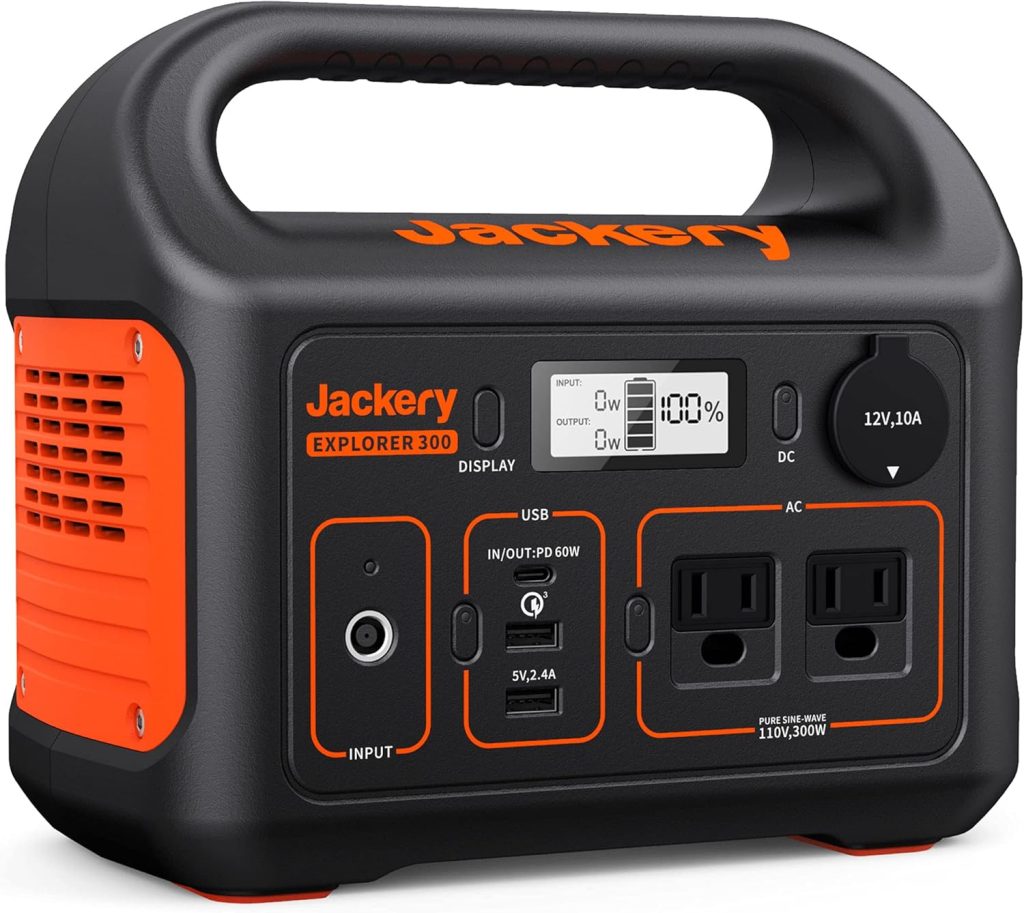
Photo Credit: Amazon
Design and Portability
Jackery’s design philosophy has always emphasized simplicity and ease of use. The Explorer 300 reflects that perfectly.
- Build Quality: High-quality plastic with durable components.
- Handle: Built-in ergonomic handle for easy carrying.
- Weight: At just over 7 pounds, it’s among the lightest in its class.
- Interface: Simple button layout with clearly labeled output sections.
Its compact size makes it easy to toss into a backpack, store in a car trunk, or keep handy at home.
Performance and Efficiency
One of the Explorer 300’s biggest strengths is its efficiency.
- During testing, it delivered 288Wh out of its advertised 293Wh capacity, a 98% efficiency rating. This far exceeds most competitors, many of which only reach 85–90% efficiency.
- When run at its maximum 300W output, the Explorer 300 lasted 40 minutes before shutting down. While this may seem short compared to larger units, it’s impressive given its small size.
This means the Explorer 300 doesn’t waste energy. You get almost the full advertised capacity, making it one of the most reliable small stations in its category.
Charging Methods
The Jackery Explorer 300 offers multiple charging options, giving users flexibility depending on their environment:
- Wall Outlet (AC Adapter)
- Fully charges in about 4 hours.
- Car Outlet (12V DC)
- Charges in approximately 4.5 hours while on the road.
- Solar Charging
- Compatible with the Jackery SolarSaga 100W panel.
- Recharges in about 5.5 hours under full sunlight.
- Uses an MPPT charge controller for maximum efficiency.
- USB-C PD Charging
- 60W PD port supports both input and output.
- Can replace the supplied AC adapter with a laptop charger.
- Dual Charging (AC + USB-C)
- Fastest method. Reaches 80% in just 2 hours when both are used simultaneously.
This variety ensures you’re never without options, whether at home, on the road, or off-grid.
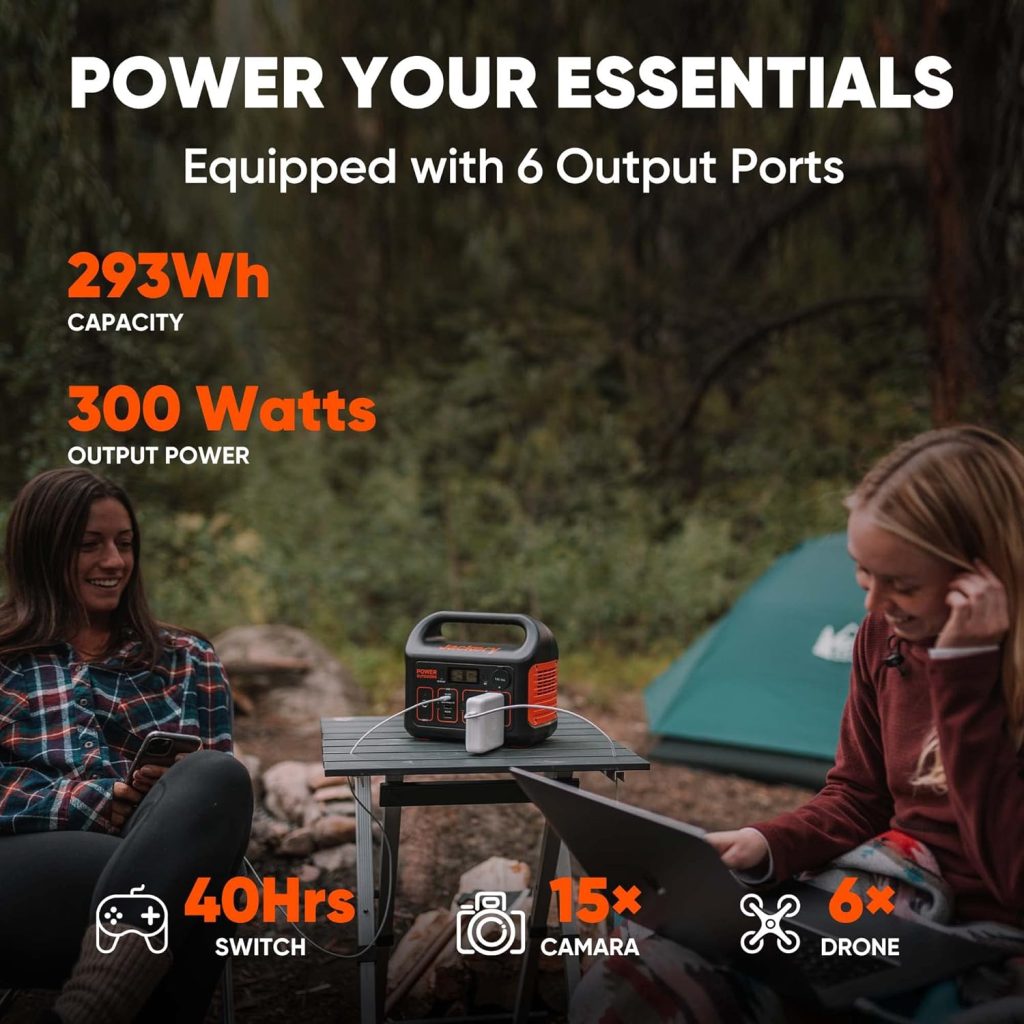
Photo Credit: Amazon
Key Features
The Explorer 300 is packed with practical features that enhance usability:
- Pass-Through Charging
Allows simultaneous charging and discharging, similar to a UPS (uninterruptible power supply). - Pure Sine Wave Inverter
Provides stable, clean electricity safe for sensitive electronics like laptops and medical devices. - User-Friendly LCD Display
Shows real-time input/output power, remaining battery percentage, and port status. - Quiet Operation
The cooling fan only activates under medium-to-high loads, generating minimal noise. - Safety Features
Built-in protection against overcharging, short circuits, and overheating.
Reasons to Buy the Explorer 300
Here are the biggest selling points:
- ✅ High Efficiency: 98% usable capacity, nearly zero wasted energy.
- ✅ Lightweight & Compact: Only 7.1 pounds.
- ✅ Multiple Output Ports: Charge up to 6 devices simultaneously.
- ✅ Fast Recharge Options: Dual input allows quick charging.
- ✅ Solar Compatible: Works seamlessly with Jackery SolarSaga panels.
- ✅ Quiet & Safe Indoors: No fumes or noise compared to gas generators.
Reasons to Avoid
The Explorer 300 isn’t perfect. Some limitations include:
- ❌ Low Wattage Limit: Max 300W inverter can’t power appliances like coffee makers, heaters, hot plates, or projectors.
- ❌ Shorter Run Time: Larger devices drain it quickly.
- ❌ No Built-in Flashlight: A feature some competitors include.
- ❌ Premium Price: At $299.99, it’s pricier per Wh compared to some alternatives.
Real-World Use Cases
1. Camping & Outdoors
Perfect for charging phones, cameras, GPS devices, and even a small fridge during weekend trips.
2. Emergency Backup at Home
Keeps essentials like routers, lights, laptops, and CPAP machines running during blackouts.
3. Remote Work Power Supply
Ideal for running a laptop and phone when working outside or during a power outage.
4. Road Trips
Recharges from a car outlet while driving, providing power for electronics when parked.
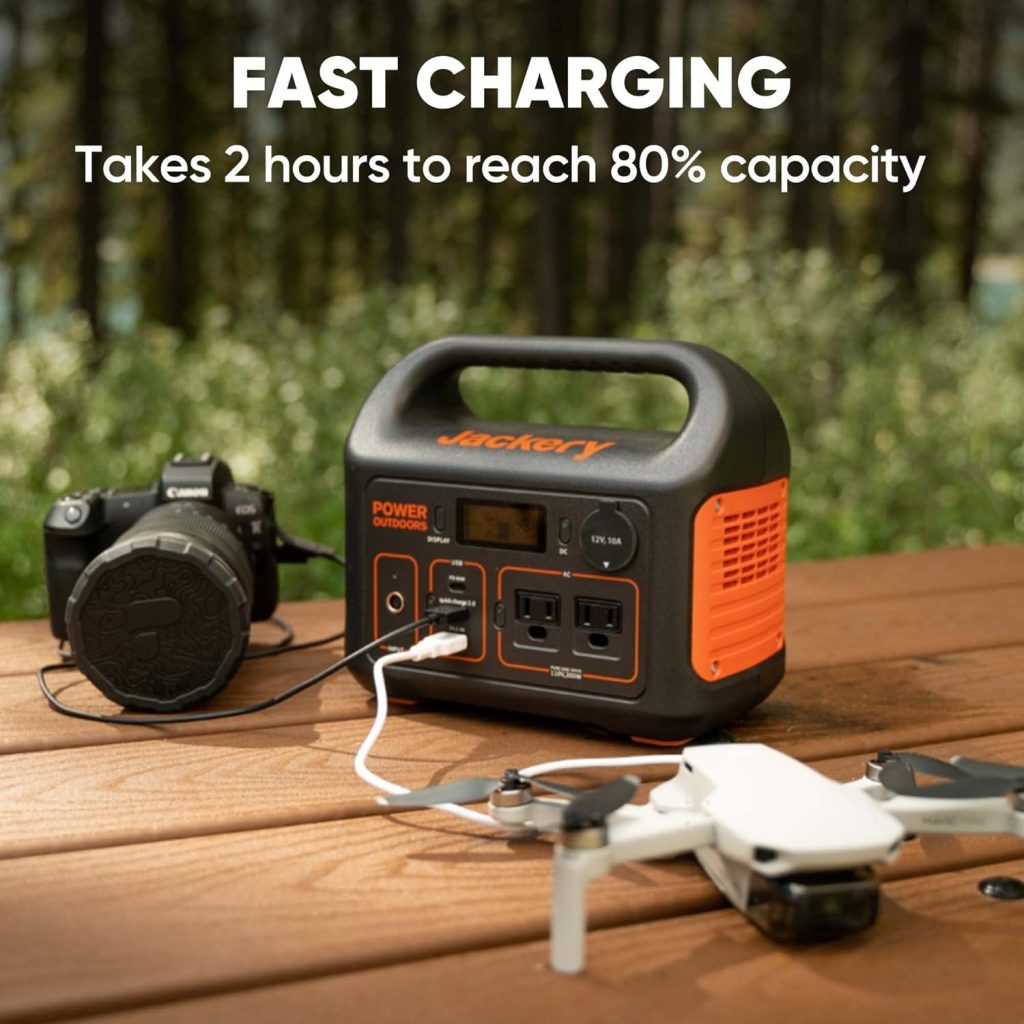
Photo Credit: Amazon
Competition Comparison
Jackery Explorer 300 vs EcoFlow River
- EcoFlow River: 288Wh battery, 600W inverter, costs around $499.
- Jackery 300: 293Wh, 300W inverter, costs $299.
- Verdict: EcoFlow has more inverter power, but Jackery wins in portability and efficiency.
Jackery Explorer 300 vs GOLABS R300
- GOLABS R300: 299Wh, 300W inverter, heavier design, shorter warranty.
- Jackery 300: Lighter, better brand support, higher build quality.
- Verdict: Jackery offers better reliability and usability.
Jackery Explorer 300 vs Jackery Explorer 1000
- Explorer 1000: 1,002Wh battery, 1,000W inverter, 22 lbs.
- Explorer 300: 293Wh, 300W inverter, 7.1 lbs.
- Verdict: Explorer 1000 is better for full home backup, Explorer 300 excels in portability.
Pricing and Value for Money
The Jackery Explorer 300 is priced at $299.99. Occasionally, Jackery offers discounts (up to 30% off).
When analyzing dollar per Wh:
- Jackery 300 = ~$1 per Wh.
- Competitors vary between $0.80 and $1.20 per Wh.
So while it carries a slight brand premium, its build quality, efficiency, and support justify the price.
Pros and Cons Table
| Pros | Cons |
|---|---|
| High efficiency (98% usable capacity) | Limited to low-wattage appliances |
| Lightweight (7.1 lbs) | Premium pricing compared to some competitors |
| Multiple ports (6 devices at once) | No built-in flashlight |
| Fast recharge options (dual input) | Short run time at max load |
| Solar panel compatible (MPPT) | Fan noise under high loads |
| Safe, quiet, emission-free | Not expandable beyond 293Wh |
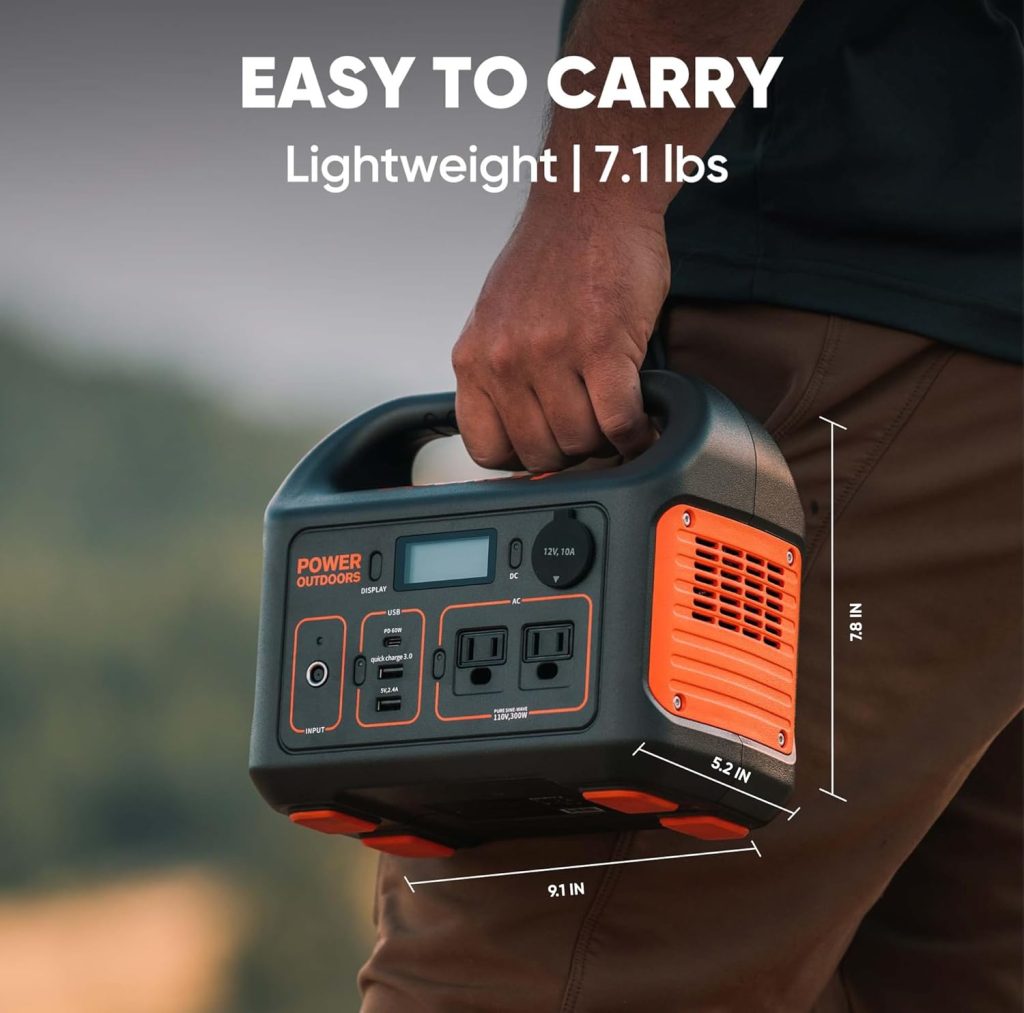
Photo Credit: Amazon
FAQs
Q1: What devices can the Explorer 300 power?
Any device under 300W. This includes phones, laptops, routers, CPAP machines, drones, and small refrigerators.
Q2: How do I calculate run time?
Formula: Working Time = 300Wh × 0.85 ÷ Device Wattage.
Example: A 60W device runs for about 4.3 hours.
Q3: How long does it take to recharge?
- AC wall outlet: ~4 hours
- Car port: ~4.5 hours
- SolarSaga 100W panel: ~5.5 hours
- Dual AC + USB-C: ~2 hours (to 80%)
Q4: Can it be charged while in use?
Yes, the Explorer 300 supports pass-through charging, making it act like a mini UPS.
Final Verdict
The Jackery Portable Power Station Explorer 300 is a near-perfect blend of portability, efficiency, and reliability. While it won’t power heavy appliances, it shines in the role it was designed for—providing clean, quiet, and safe electricity for small devices and essential electronics.
Best For:
- Campers and outdoor travelers
- Remote workers
- Homeowners needing light emergency backup
- Road trip enthusiasts
Not Ideal For:
- Running heavy appliances (coffee makers, heaters, power tools)
- Whole-house backup needs
Conclusion
In the crowded field of portable solar generators, the Jackery Explorer 300 continues to stand out in 2025. Its lightweight design, high efficiency, versatile charging options, and trusted Jackery brand support make it a top contender in the small generator category.
If you need a compact, reliable, and solar-ready generator to keep your essential devices running during camping trips, road journeys, or blackouts, the Explorer 300 is one of the best investments you can make.

